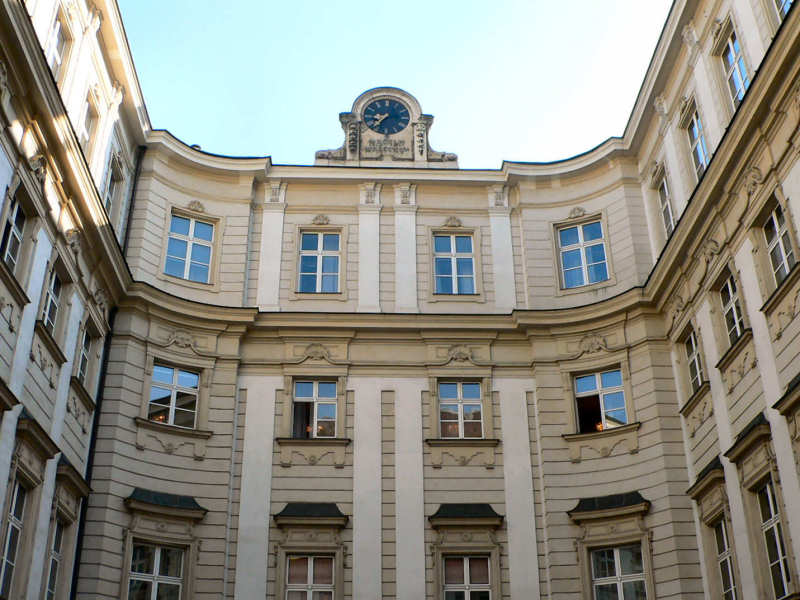Austrian Ombudsman Board and Finanzprokuratur

Singerstraße 17-19, 1010 Vienna
Rottal Palace (690.137)
General and Historical Facts
In the middle of the 18th century three buildings were consolidated to form one building, which was to be occupied by the Viennese State Bank under Maria Theresa (1717–1780). Latest findings point to Franz Anton Pilgram (1699–1761; a pupil of Johann Lucas of Hildebrandt) being responsible for its redesign. The richly ornamented Baroque façade, the state stairways and the large inner courtyard surrounded by homogeneous façades date back to this time.
Two buildings face Singerstraße Street: the Rottal Palace building built around 1667 and 1683, which belonged to the heirs of Count Rottal (the name of the former two-storey palace building was used for the entire building later on) and the Billiotte Foundation building. The latter had been registered in the land cadastre as "Armeleuth-Haus im Eckhaus gegen grünen Anger hinein" (meaning, among other things, Poor People’s House in the corner building). Dr Billiotte, Emperor Leopold I’s (1640–1705) personal royal physician, let the poor live and eat there for free. The former four-storey building is characterised by a stringent but elegant façade structure. It was most likely built by Anton Ospel (1677–1756) before 1733.
Around 1845, another storey was added; also, the fascia was adorned with stone statues, which are said to originate from Prince Eugene’s palace in Himmelpfortgasse Alley. It was also then, that the upper part of the façades were given their present look.
In the 1850s, Rottal Palace was the seat of the Royal Ministry for Education and Teaching. Later, it housed, once again, the court’s financial administration bodies, such as the state authorities for central payment and debt, Staatsschuldenkasse and Staatszentralkasse. Later on, Rottal Palace came to house the Central Payroll Accounting Unit (Zentralbesoldungsamt) as of 1945. At the beginning of the 1980s, the building underwent general refurbishment that took several years. Ever since, it has housed the lawyer and legal advisory body of Austria (Finanzprokuratur) and the Austrian Ombudsman Board. The rooms on the ground floor have been rented to the Artmark gallery since 2005.
Occupants:
Austrian Ombudsman Board
Finanzprokuratur
Galerie artmark
Burghauptmannschaft Österreich – Departments in charge:
Building Management: Dep. 405 – Government Building
HVAC: Dep. 306 – HVAC
Property Management: Dep. 201 – Administration
Telephone: Dep. 103 – Telecommunications